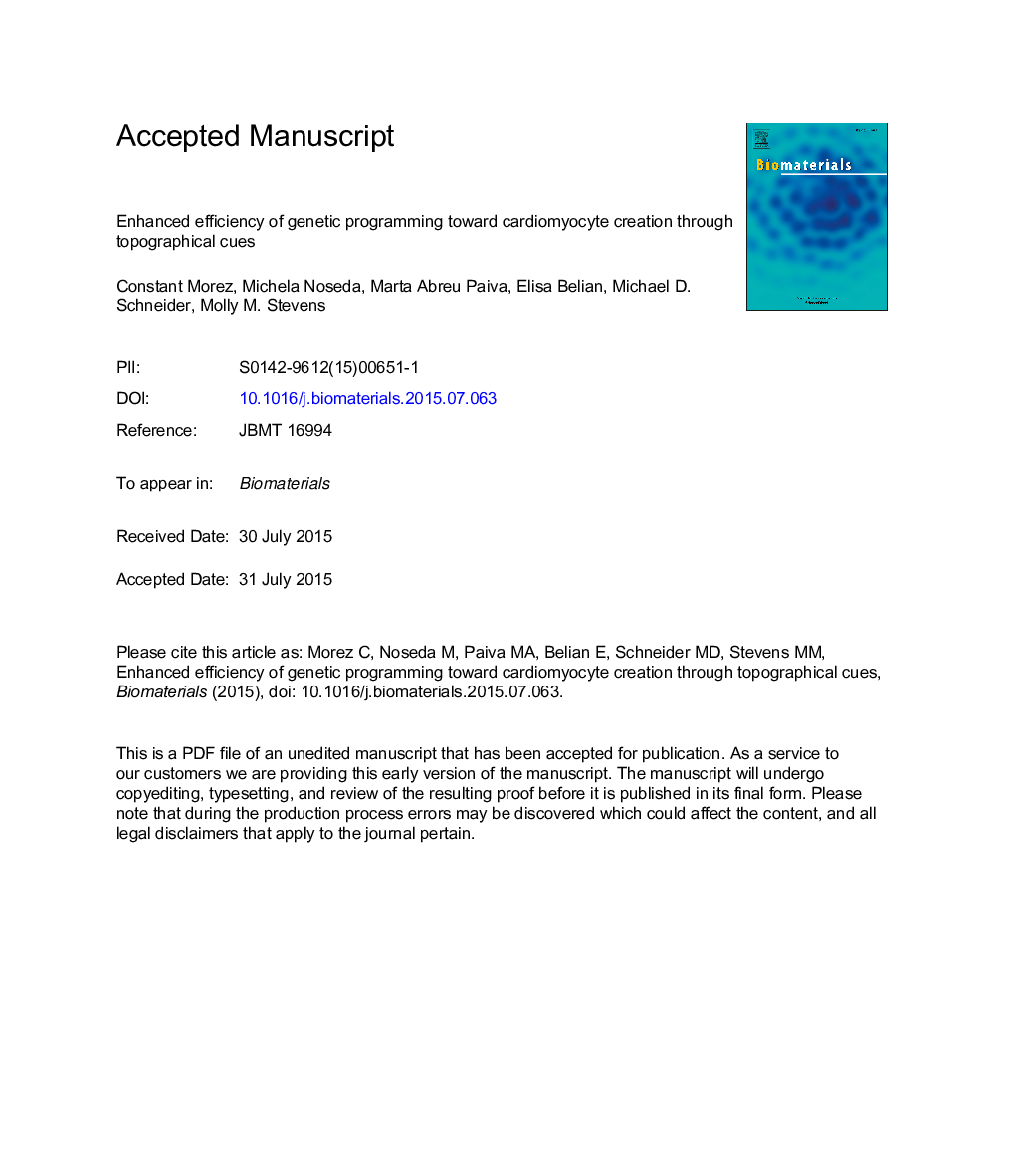| Article ID | Journal | Published Year | Pages | File Type |
|---|---|---|---|---|
| 6485413 | Biomaterials | 2015 | 28 Pages |
Abstract
Generation of de novo cardiomyocytes through viral over-expression of key transcription factors represents a highly promising strategy for cardiac muscle tissue regeneration. Although the feasibility of cell reprogramming has been proven possible both in vitro and in vivo, the efficiency of the process remains extremely low. Here, we report a chemical-free technique in which topographical cues, more specifically parallel microgrooves, enhance the directed differentiation of cardiac progenitors into cardiomyocyte-like cells. Using a lentivirus-mediated direct reprogramming strategy for expression of Myocardin, Tbx5, and Mef2c, we showed that the microgrooved substrate provokes an increase in histone H3 acetylation (AcH3), known to be a permissive environment for reprogramming by “stemness” factors, as well as stimulation of myocardin sumoylation, a post-translational modification essential to the transcriptional function of this key co-activator. These biochemical effects mimicked those of a pharmacological histone deacetylase inhibitor, valproic acid (VPA), and like VPA markedly augmented the expression of cardiomyocyte-specific proteins by the genetically engineered cells. No instructive effect was seen in cells unresponsive to VPA. In addition, the anisotropy resulting from parallel microgrooves induced cellular alignment, mimicking the native ventricular myocardium and augmenting sarcomere organization.
Related Topics
Physical Sciences and Engineering
Chemical Engineering
Bioengineering
Authors
Constant Morez, Michela Noseda, Marta Abreu Paiva, Elisa Belian, Michael D. Schneider, Molly M. Stevens,
